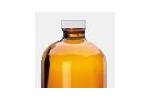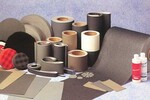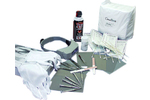- ▶
- Heaters/Source
- ▶
- Agilent Heaters and SensorsMass Spectrometry, Scientific Supplies & ManufacturingScientific Instrument Services 5973 Source Heater Tamper Resistant Allen Wrench 5973/5975 Quad Sensor 5985 Source Heater Assembly Agilent Interface Heater Assembly 5971 Interface Heater

- ▶
- MS Instrument Cleaning Supplies
- Lab/CleanMicro-Mesh® (Fine Cushioned Abrasive) Aluminum Oxide Cleaning Abrasive Fiberglass Cleaning Brushes Swabs and Applicators Nylon and Latex Gloves Cleaning Wipes SIS MS Source Cleaning Kits Dust-Off® Hurricane Canless Air System Wheaton Bottles Wheaton Vials Wheaton Closures Sterile Vials - Bottle, Stopper, and Cap - All Together Certified Sterile Kimble Chase Clear Serum Vials Soil Sampling Kits Crimpers and Decappers Temperature Measurement & Recording Devices Bullet Blender® Homogenizer The SW 110 Multi-Purpose Spot Welder New Era Syringe Pump Systems Ohaus MB Series Moisture Analyzers Celestron® Handheld Digital Microscope (HDM) Checkit® Pipette Accuracy Test Greenwood Lab Supplies Next Advance Lab Products Catalog Page G1

- ▶
- Micro-Mesh®Sheets Rolls Discs Pads Nail Files Tufbuf Micro-Gloss Tape Belts Sanding Swabs Polishing Tool Quick-Shine Buffers Kits - Plastic (power) Kits - Plastic (hand) Kits - Craftsman, Wood, Metal Kits - Automotive & Headlight Restoration Kits Kits - Aircraft Window Reference - Grit Size Reference - MSDS Sheets, Brochures, Instructions, Kits Print Catalog - Micro-Mesh Catalog Page A63 Catalog Page A64 Catalog Page A65 Catalog Page A66 Catalog Page G3 Catalog Page G4 Catalog Page G5 Catalog Page G6 Catalog Page G7 Catalog Page G8

- LiteratureApplication Notes Adsorbent Resins Guide Mass Spec Tips SDS Sheets FAQ MS Calibration Compound Spectra Manuals MS Links/Labs/ Organizations MS Online Tools Flyers on Products/Services Scientific Supplies Catalog About Us NextAdvance Bullet Blender® Homogenizer Protocols Micro-Mesh® Literature Instrumentation Literature Agilent GC/MS Literature SIS News / E-Mail Newsletter NIST MS Database - Update Notifications

- ▶
- Reference - MSDS Sheets, Brochures, Instructions, KitsMicro-Mesh Regular - Description of Micro-Mesh Regular Micro-Mesh MX - Description of Micro-Mesh MX for Metal Finishing Benefits of Micro-Mesh - What Makes Micro-Mesh So Special Ergonomic Benefits of Micro-Mesh - Human Factors, Engineering and Micro-Mesh TufBuf Polishing Pads - Polishing and Buffing Pads Guidelines for Acrylic Finishing Guideline for Making Belts with Micro-Mesh Micro-Gloss Instructions Metal Finishing with Micro-Mesh Random Orbital sanding with Micro-Mesh Solid Surface Finishing with Micro-Mesh Urethane Coating rectification Procedures Wood Finishing Procedures with Micro-Mesh Micro-Mesh Grit Size Conversion Chart Aquarium Restorer Kit Instructions Belt Finishing with Micro-Mesh Burn Kit Instructions Clear Seas Acrylic Kit Instructions Clear Seas Vinyl Kit Instructions Craft Kit Instructions Heavy Damage Removal Kit Instructions Light Damage Removal Kit Instructions KR-70 Acrylic Restoration Kit Instructions Maintenance Kit Instructions Micro-Mesh Anti-Static Cream Final Finish Micro-Finish Micro-Gloss Micro-Gloss # 5 TufBuf Polishing Pad

- ▶
- Metal Finishing with Micro-Mesh (This Page)
Sanding is used to establish a part's geometry or finish. Geometry is commonly established with coarse grits of coated abrasives, bonded abrasive wheels or by hand turning. Finishing is generally achieved with successively finer grades of abrasives until the desired surface quality (appearance) is obtained.
MICRO-MESH MX is a series of cushioned abrasives with a slightly stiffer backing, and several coarser grades than the MICRO-MESH Regular series. MICRO-MESH MX enables the user to achieve the desired finish faster and often with less steps than with conventional abrasives. Start to use MX as soon as practical in the finishing sequence.
All MICRO-MESH Regular and MX grades are constructed with a thin layer of soft resilient material between the cloth back and the abrasive crystals. This provides the unique "cushioned" action for the abrasives. This unique design allows the abrasive crystals to recede into the resilient layer and float to an even cutting plane. This eliminates deep random scratches and results in uniform scratch patterns and significantly longer product life than conventional abrasives.
MX grades cut rapidly due to the relatively large crystals and because the flexing action allows more abrasive crystals to contact the workpiece. The flexibility of the crystals keeps the swarf loose and prevents loading. MICRO-MESH outlasts conventional abrasives because the relatively large crystals do not load up. The flexibility prevents the crystals from fracturing and generating heat into the workpiece.
MX is economical to use. In dry applications, it outlasts conventional abrasives 5 - 7 times, When used wet, the life advantages increase 7 - 15 times that of conventional abrasives. MX can be used with most standard cutting oils, honing oils or coolants, either water or oil based. The objective is to flush the surface of the MX and the workpiece to keep it free of swarf. MX can not be used with solvents like acetone or certain chlorinated solvents. Lubricating with grease type or filler type lubricants will cause rapid loading. Such belt compounds are used to soften the cut of common abrasives which is not necessary since MX is engineered to have a controlled aggressiveness. Once the abrasive crystals have receded to their given level, further down pressure will not increase the rate of removal or surface quality but will put stress on the material. Keep the pressure light.
Machine Speeds
On .plastics and woods - speeds of 1000 sfpm (less if possible). Plastics should always be worked with a water mist.
Metals - Speeds below 6000 sfpm are recommended.
The floating action of the abrasive crystals in MX does not require high speed operation to achieve super finishes. If higher speeds are used, feed rates and pressure should be reduced. As a general rule, higher speeds promote a faster cut, while slower speeds produce a better finish.
Contact wheels should be kept as soft as possible for best finish and longest life. A non-serrated 40 durometer rubber wheel or a cloth wheel should be used. MX can also be used on inflatable wheels as replacement for buffing wheels.
If a "mirror" or highly reflective surface with no visible scratches are required, more steps are needed than for a #4 or #7 finish.
Steel, stainless and ferrous metals
The following is general information to help, not meant as an instruction sheet. Variables such as speed, pressure and differences in materials to be finished may change the combination of MX used. When starting with mill finished or ferrous stock, it may be desirable to use a conventional 240 or 280 p grit to remove all mill marks, scale, etc. A combination such as 100MX and 240MX. 400 MX is recommended for finishing steels. 400 MX cuts like a 400-600 grit but should leave a 1200-1500 grit finish. When a finer finish is required, use 600, 800 or 1200 MX. Sand casted material will require more steps with conventional abrasives before using MX.
Copper, brass, bronze, aluminum and other soft metals
The procedure is similar to that of steel. However, the starting point can be 80 MX, 100 MX or finer depending on the softness of the material. Coarse castings will require conventional abrasive steps prior to using MICRO-MESH. When finishing aluminum, it is important to slow the surface speed down and use a coolant made for aluminum.
Hataloys, titanium, nickel, stellite and other special materials and alloys
Each of these materials requires a trial piece run to determine the best sequence for achieving the desired finish.
06/01/02 - Technical Bulletin #2


